Your Brand Starts With Your Name
Whether it is intentional or not, for most enterprises the branding process begins when they start thinking of a name for their business or products. And for most customers the first aspect of a brand that they experience is the name.
Despite the importance of a brand name it’s common for names to be created independently to other aspects of branding, mainly because many people associate branding just with aesthetics.
The branding process
During the branding process research is conducted about your competitors and your marketplace. The aim is to distinguish your brand and deliver what your customers need in order to gain a competitive advantage. It makes sense that this knowledge and strategy is applied to the creation of business and product names too.
Taking an approach to name creation that is based on insight and research will allow you to explore name options that you would not otherwise have considered. It also makes the name selection process easier, as you have a set of brand values and a desired positioning to measure names that are shortlisted against.
Rebranding
Changing the name of a business or product can be the most difficult part of rebranding. People can become attached to a name and resist a change even when it is shown to be beneficial. In other instances a name can hold a lot of brand equity and a name change may not be a wise decision. If your name is a significant aspect of your brand and recognition then any plans to change it should be carefully considered and, if implemented, should be managed strategically.
Practical considerations
When selecting a new name there’s more to consider than just your brand. Practical aspects around domain name availability and Intellectual Property (IP) need to be researched.
The advent of the internet has seen a rise in brand names that use misspellings of regular words to create an available domain name for websites. This tactic can resolve the issue of securing a domain name but has the potential to make it difficult for people to find you online and can cause ongoing confusion during the day-to-day use of the name.
IP is an important aspect to get right. Imagine investing time and money in a brand name and new branding, only to receive a cease and desist letter from another company who feel you’ve breached their copyright. To avoid this an IP attorney can help review any names that you shortlist to make sure they won’t lead to problems for you. They will also ensure your name can be used across any business categories that you plan to operate in. Don’t forget, you wouldn’t want to infringe on anyone’s copyright in other countries that you plan to operate in either.
If you plan to enter overseas markets it’s worth considering how your name is pronounced in other languages, or if it has a different meaning. There are numerous (and often humorous) examples of company and product names that have a completely different meaning in a foreign language.
Name or brand name?
It is common to refer to the names of products as their ‘brand name’ but we don’t often refer to business names in this way. Business owners could learn a lesson from product manufacturers by referring to their business name as a brand name – the change in perspective could produce some positive results.
Remember that a business or product name that has relevance to your brand and resonates with your customers can be a strong way to convey your positioning in the marketplace and build brand recognition.
Posted 5 August 2015
Previous Next